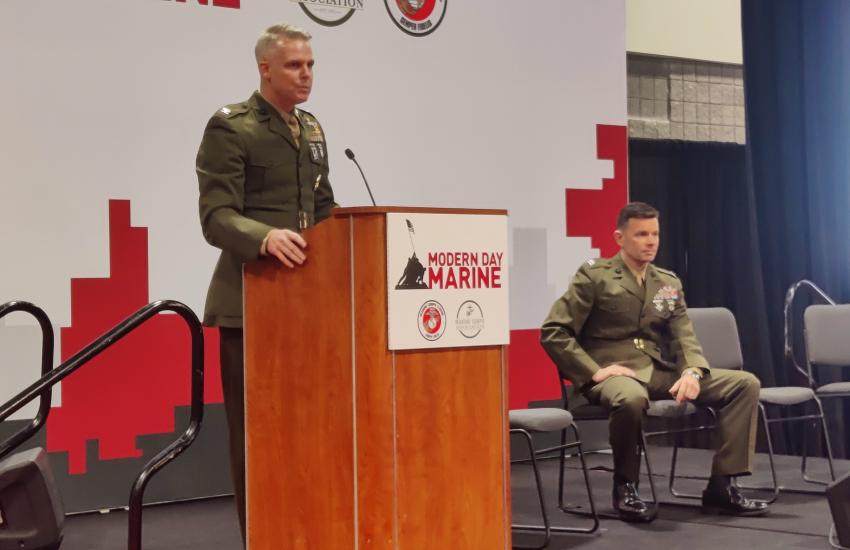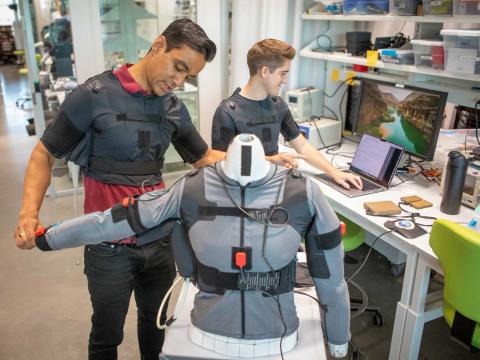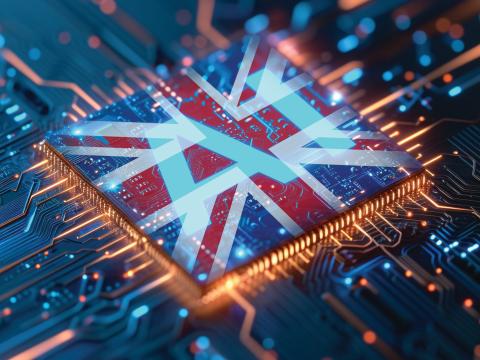The Rise of the Navy Robots
After the recent publication of a Navy science and technology strategy, the secretary of the Navy addressed a key recommendation for the future of the department.
“I'm excited by some of the recommendations that came up on autonomous vessels, for example, and how we should be investing in not just a top autonomous technology, but across all domains,” said Secretary Carlos Del Toro.
Del Toro spoke with journalists on the sidelines of this year’s Modern Day Marine (MDM) event, where service leaders addressed audiences and laid out plans. Unmanned technologies and their impact on all domains was a central topic under discussion during the week-long event and at a congressional hearing on Wednesday as well.
Much of how unmanned assets will operate is still open to debate, as technologies evolve and their use is better understood. Still, drones are expected to add volume and capabilities to the force in all domains.
“A fleet that includes and enables Marines in a naval campaign forward with medium, large, small, unmanned surface vessels, [unmanned aerial vehicles], unmanned systems, in combination with the force—and that's mass,” said Maj. Gen. Marcus Annibale, director, Expeditionary Warfare.

On the unmanned side, and we're looking at the Black Sea.
And not all lessons come from experimentation.
“On the unmanned side, and we're looking at the Black Sea, the battle for the Black Sea and what Ukraine has arguably successfully done with an unmanned, hybrid navy—or almost all unmanned—to provide sea control and sea denial to the Russian fleet,” Gen. Annibale said at the MDM panel The Evolving Character of Expeditionary Warfare-Unmanned Systems Supporting Marines and the Naval Campaign, on Thursday.
The Navy’s first robotics warfare specialist was pinned in February. This is part the evolution of the service as autonomy gains importance, according to Gen. Annibale.
One recent development was the use of the Lionfish, a seabed reconnaissance device. During a recent exercise with allies the U.S. device recognized an anomaly of interest on the terrain, a potential mine, and relayed precise data to operators in the surface to decide how to counter that danger, according to Gen. Annibale. This device was used in coordination with U.K. and Netherland devices to provide a more complete picture, during this training event.
A plethora of use cases emerges in the Department of Defense for unmanned vehicles, still this is not the only technology the Marines expect to leverage in the near future.
“What we really need to take a look at are gaps that are huge: counter small [unmanned aerial vehicles] force protection capabilities,” said Col. Derek Brannon, director of the Cunningham Group, deputy commandant for Aviation, during another panel.

We also have six other laser projects and high energy projects.
On this, the secretary of the navy spoke at a House hearing on Wednesday.
“We've accelerated the development and the testing of the HELIOS laser program,” Del Toro told members of the House Armed Services Committee.
“We also have six other laser projects and high energy projects,” Del Toro added without elaborating, as these were classified.
Speaking about the evolving capabilities of the Marines, Commandant Gen. Eric Smith explained that warfighters will face new challenges, while values do not change.
“They also have to confront new emerging technologies such as generative AI, machine learning and quantum computing. Done right, Marines will sense and make sense of the battlefield in ways that will carry decision advantage to their commanders, like no generation before them. And when the time comes, they'll take the hill just as well as every Marine who came before them,” Gen. Smith told the audience during his keynote speech.
Modern Day Marine is a yearly event organized by the Marine Corps League and Marine Corps Association.






Comments